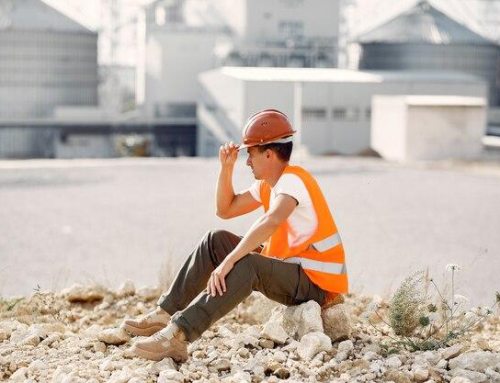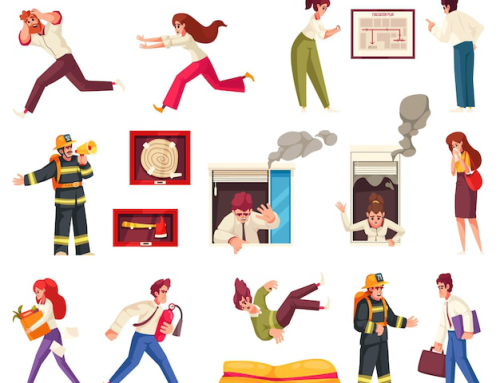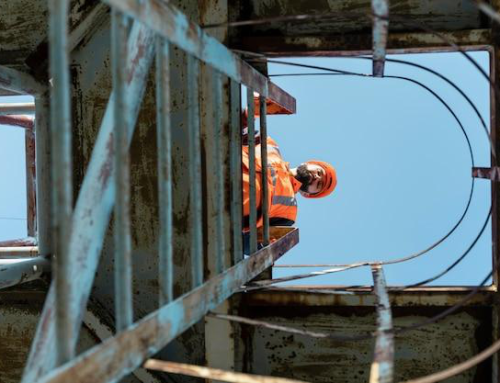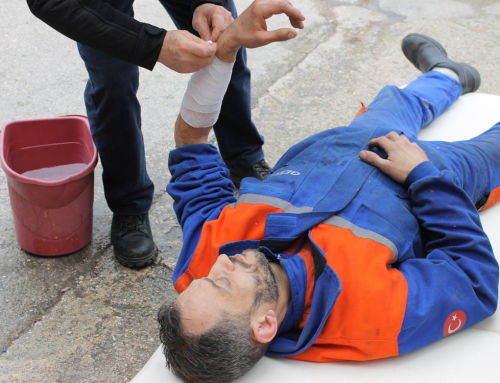Slips, trips, and falls (STFs) are among the most common workplace accidents, leading to injuries, disabilities, and even fatalities. In this comprehensive guide, we’ll delve into the various causes of workplace STFs and provide 12 detailed strategies for identifying, mitigating, and preventing these hazards.
From understanding the importance of proper footwear to implementing effective hazard control measures, we’ll equip you with the knowledge and tools necessary to minimize workplace STFs and promote a safer work environment for all employees.
Understanding Workplace Hazards
Slips, trips, and falls can occur in any workplace setting, from offices and retail stores to construction sites and industrial facilities. Understanding the factors that contribute to these accidents is crucial for implementing effective preventive measures. Some common causes of workplace STFs include:
Wet or Slippery Surfaces
Spills, leaks, or wet weather conditions can create slippery surfaces, increasing the risk of slips and falls. Areas prone to wetness, such as kitchens, bathrooms, and outdoor walkways, require regular monitoring and maintenance to prevent accidents. Fall protection inspection training emphasizes the importance of promptly cleaning up spills and providing adequate warning signs to alert employees to potential hazards.
Uneven or Obstructed Walkways
Uneven flooring, loose carpeting, or debris in walkways can cause employees to trip and fall. Additionally, cluttered work areas, trailing cables, or poorly placed equipment pose tripping hazards that require immediate attention. Level 2 first aid training underscores the importance of keeping walkways clear and maintaining proper housekeeping practices to minimize the risk of accidents.
Poor Lighting
Inadequate lighting in work areas can impair visibility and make it difficult for employees to detect potential hazards. Dark stairwells, dimly lit hallways, or poorly illuminated outdoor pathways increase the likelihood of trips and falls, especially in low-light conditions. Occupational First Aid Level 1, 2, and 3 courses in Surrey stress the importance of proper lighting design and maintenance to enhance visibility and prevent accidents in the workplace.
Improper Footwear
Wearing inappropriate footwear, such as high heels, worn-out shoes, or shoes with inadequate grip, can increase the risk of slips, trips, and falls. Employees should be encouraged to wear sturdy, nonslip footwear appropriate for their work environment. OFA courses in Vancouver highlight the role of proper footwear in preventing workplace accidents and recommend regular inspection and replacement of worn-out shoes to maintain safety.
Weather Conditions
Adverse weather conditions, such as rain, snow, or ice, can create hazardous outdoor surfaces, leading to slips and falls. Employers should implement measures such as salting, sanding, or snow removal to address weather-related hazards and ensure safe passage for employees. First aid training courses Surrey emphasize the importance of adapting to changing weather conditions and taking proactive steps to minimize risks associated with inclement weather.
Strategies for Minimizing Workplace STFs
Now that we’ve identified the common causes of workplace slips, trips, and falls, let’s explore 12 effective strategies for minimizing these hazards and promoting a safer work environment:
Conduct Regular Hazard Assessments
Employers should conduct regular inspections of the workplace to identify potential STFs hazards, such as slippery surfaces, uneven flooring, or poor lighting. Fall protection inspection training teaches employees how to conduct thorough inspections and identify potential hazards before accidents occur.
Here are five steps typically involved in a STF (Slips, Trips, and Falls) hazard assessment:
Identify Potential Hazards: Begin by identifying areas in the workplace where slips, trips, and falls could occur. This includes uneven flooring, wet or slippery surfaces, loose cables or wires, inadequate lighting, and cluttered walkways.
Evaluate Risk Factors: Assess the likelihood and severity of slips, trips, and falls in each identified hazard area. Consider factors such as frequency of foot traffic, presence of liquids or other substances on floors, proximity to staircases or elevated surfaces, and the potential for distractions.
Implement Control Measures: Once hazards and associated risks are identified, implement control measures to mitigate or eliminate them. This may involve installing anti-slip flooring, using signage to warn of potential hazards, implementing regular cleaning and maintenance schedules, providing proper lighting, and implementing procedures for promptly cleaning up spills.
Implement Proper Housekeeping Practices
Maintaining clean and organized work areas is essential for preventing slips, trips, and falls. Employees should be trained to promptly clean up spills, remove debris from walkways, and keep work areas clutter-free. Level 2 first aid training in Surrey helps workers understand the importance of proper housekeeping practices in reducing the risk of workplace accidents.
Provide Adequate Lighting
Proper lighting is crucial for enhancing visibility and reducing the risk of STFs accidents, especially in dimly lit areas or during nighttime work. Employers should ensure that work areas are well-lit, with adequate lighting levels to enhance visibility and prevent accidents. Occupational First Aid Level 1, 2, and 3 courses in Surrey underscore the importance of proper lighting design and maintenance in promoting workplace safety.
Install Slip-Resistant Flooring
Using slip-resistant flooring materials in areas prone to spills or wet conditions can help prevent slips and falls. Employers should consider installing nonslip mats or applying slip-resistant coatings to floors to enhance traction and reduce the risk of accidents.
Provide Proper Footwear
Employers should encourage employees to wear appropriate footwear with nonslip soles and adequate support to minimize the risk of slips and falls. Employees working in hazardous environments should be provided with specialized safety footwear designed to provide maximum traction and stability. First aid training courses in Surrey accentuate the need for wearing proper footwear to prevent workplace accidents.
Install Handrails and Guardrails
Installing handrails and guardrails in areas such as stairwells, ramps, and elevated platforms can provide additional support and prevent falls. Employers should ensure that handrails and guardrails are securely anchored and meet safety standards to effectively protect employees from falls. Fall protection inspection training can teach your employees how to inspect and maintain handrails and guardrails for safety.
Provide Training and Awareness Programs
Educating employees about the importance of workplace safety and STFs prevention is essential for fostering a safety culture. Employers should provide comprehensive training on recognizing and avoiding STFs hazards, proper lifting techniques, and emergency procedures in the event of an accident. Our Level 2 first aid training in Surrey includes modules on workplace safety and STFs prevention to empower employees with the knowledge and skills needed to stay safe on the job.
Encourage Reporting of Hazards
Employees should be encouraged to report any STFs hazards or near misses to their supervisors or safety officers promptly. Implementing a reporting system allows employers to address hazards promptly and implement corrective actions to prevent future accidents.
Provide Adequate Signage
Employers should use clear and visible signage to alert employees to potential STFs hazards, such as wet floors, uneven surfaces, or steps. Signage should include warning signs, directional indicators, and safety instructions to guide employees safely through the workplace. OFA courses include modules on hazard communication and signage to ensure employees understand the meaning of different signs and symbols used in the workplace.
Implement Safe Material Handling Practice
Proper lifting and handling techniques are essential for preventing back injuries and STFs accidents. Employers should provide training on safe material handling practices, including proper lifting techniques, using mechanical aids when necessary, and avoiding overexertion.
Conduct Emergency Drills
Regular emergency drills and exercises help employees familiarize themselves with evacuation procedures and emergency response protocols in the event of a workplace accident. Employers should conduct drills for various scenarios, including STFs accidents, and ensure that employees know how to respond quickly and effectively to minimize injuries.
Continuous Monitoring and Improvement
Workplace safety is an ongoing process that requires continuous monitoring and improvement. Employers should regularly review and update safety policies and procedures, conduct safety audits and inspections, and solicit feedback from employees to identify areas for improvement. Occupational First Aid Level 3 Pro Renewal in Surrey includes modules on safety management and continuous improvement to help employers maintain a safe and healthy work environment.
By implementing the strategies outlined in this guide, employers can minimize STFs hazards, protect their employees from harm, and create a safer work environment for everyone. Investing in proper training, hazard identification, and preventive measures is essential for promoting workplace safety and reducing the risk of accidents. Remember, preventing STFs accidents requires a collective effort and a commitment to safety from all levels of the organization.
Ready to enhance your workplace safety and prevent slips, trips, and falls? Contact Metro Safety Training today to learn more about our comprehensive training programs and certification opportunities in Surrey and Vancouver.











